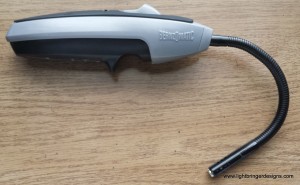Customers often ask me, what designs work best as a wax seal or ring? If you already have an image, the easy answer is to just email it to me and I’ll tell you what will work or what changes are needed.
There are some basic details that I almost always need to complete an order:
Your desired image (jpeg preferred)
Your ring or seal size (either try on sizing rings at a jeweler or try
this)
Shipping/billing address
Material choice (options and pricing are at http://shpws.me/ooJ4)
What color
sealing wax you want with that and how many sticks
Please hit “Request Custom Order” on our Etsy Store for a free design evaluation and price quote.
The two biggest influences on cost and design rules are material and size. Most designs will be about 3/4″ (19 mm) in diameter. This is about the size of an American penny. Most rings will be close to this size, unless your ring size is exceptionally large or small, and all stock seal designs are made this way. 3/4″ seals are less expensive than larger designs, and more efficient with wax – typically about 30 impressions per stick of sealing wax. I have managed to get 40 impressions out of a stick, with much experience and using a minimum amount of wax.
The largest seals are typically 1″ (25 mm) diameter, slightly bigger than an American quarter. This gives a larger canvas to work with, and is recommended especially for complex designs or a logo surrounded by text. The downsides are higher cost and using more wax, typically closer to 20 impressions per stick.
Seals don’t need to be round – I’ve made triangles, squares, and a leaf shape in the past, many other shapes are possible.
For materials, there are two categories: stainless steel (which can be plated in bronze, nickel, grey, black or gold) and the cast metals (silver, bronze, brass, gold or platinum).
Stainless steel on Shapeways is actually a stainless steel powder, with bronze holding the powder together. This is a lower cost option, but the available detail is lower. Details in your design generally need to be at least 0.040″ (1 mm) wide, which is like drawing with a dull pencil. Usually it’s best for white space between lines to follow this rule as well. There are exceptions and tricks to get more out of this material, such as using layers. Think of it like using different colored pencils to represent details cut to different depths in the stamp, where any place two different colors meet shows as a line on the final seal. Remember that the line width rule applies to each color, and this works best if each color is a larger, shaded area. Letters are generally limited to large monograms, 1-4 characters. Rings are no longer available in Stainless Steel.
The biggest difference for the cast metals is the minimum line width is half the size, 0.020″ (0.5 mm), like drawing with a 0.5 mm mechanical pencil. This allows for more detailed artwork and more text. Small sections as thin as 0.010″ (0.3 mm) can be made, but are not recommended as they don’t always fill with wax properly.
Polished Silver is the most requested material for signet rings, giving fine details at a reasonable cost without concern for tea staining (though some people do have a reaction to silver). It also has a very short production time.
Bronze and brass give the same level of detail to seals at a lower cost than silver, but production time is much longer. Gold or rhodium plating is available on Polished Brass. Another point to consider about these two materials is something called “tea staining.” Some people have skin chemistry that reacts with these metals with prolonged contact (such as wearing it as a ring). This is a relatively rare and harmless but unsightly brown discoloration that does wash off. I’m told that gold plating or applying clear nail polish to the skin contact area can sometimes prevent the reaction, but I can’t make any guarantees.
Gold and Platinum have a very high cost per cubic centimeter – please DO NOT order these materials through the Shapeways template, as a change in ring size can have a big price impact. Please email orders@lightbringerdesigns.com to request a quote.
These are all more guidelines than rules. Thanks to the flexibility of 3D printing and experience with over 80 unique seal designs, I’m constantly surprising myself with what I can get away with. You will always get a proof sheet emailed to you before the design is committed to production, showing a rendering of exactly what it will look like.
Please note that all delivery times assume domestic (USA) shipping – international post and customs can cause unpredictable delays! Also, with any product being designed for the first time, there is always the possibility of unexpected delays in production. The best defense against this is to order early.

